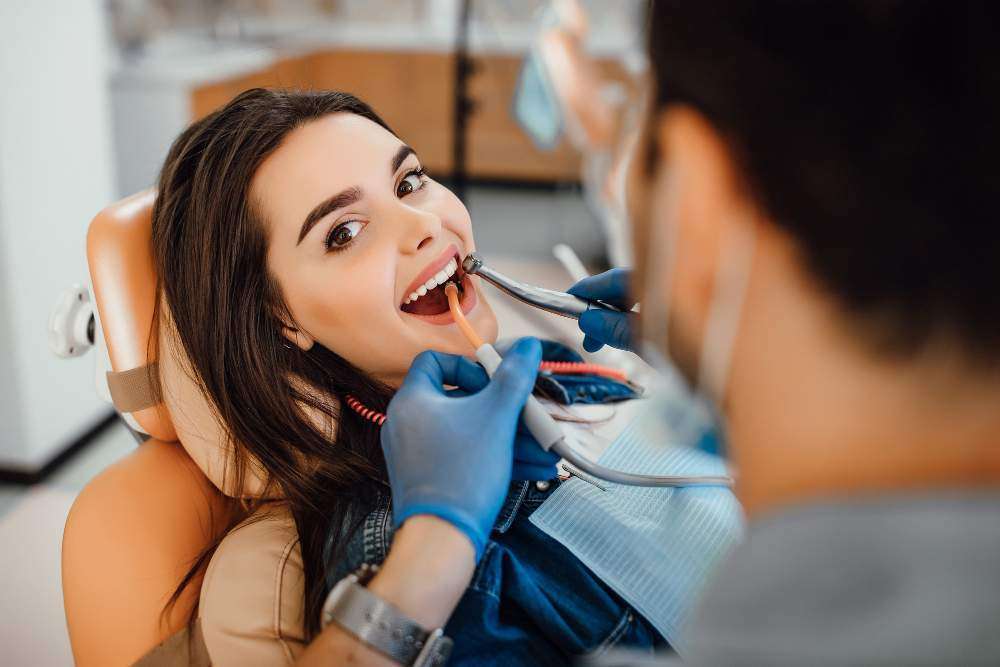
Teeth are essential for our capacity to eat, communicate, and smile; Dentistry has depended on traditional approaches for restoring broken or decayed teeth for millennia. These techniques include fillings, crowns, and dental implants. But current scientific research has sparked a query: Can teeth heal themselves? This article will outline teeth’ natural repair processes and the variables that may influence those processes.
What are Teeth’s Natural Repair Mechanisms?
Natural repair mechanisms in teeth relate to the innate methods for dental tissues to recover from harm or deterioration. Remineralising enamel and the dentin repair process are the two main natural repair mechanisms in teeth—secondary dentin insertion.
Enamel remineralisation:
The enamel, the top layer of the tooth, is predominantly made of the mineral crystal hydroxyapatite. The dentin and pulp underneath, which are more delicate, are shielded by this, the toughest component in the human body. The acids created by oral bacteria and the acidic foods and beverages we consume daily harm our teeth.
Demineralisation is the process through which vital minerals like calcium and phosphate are lost as acid erodes the enamel. Remineralisation, a form of natural repair, inhibits this procedure. Saliva is essential in supplying the minerals required to repair the enamel. It has calcium and phosphate ions, which the body can take in. Mineral depletion and rebuild the structural integrity of the enamel on the tooth surface.
Self-repair Dentin
The layer below the enamel, or dentin, makes up most of the tooth’s structure. It is a living tissue of nerve endings that send feelings to the pulp through tubules packed with fluid. A natural repair procedure may start when the dentin is exposed due to tooth decay, deterioration of the enamel, or other circumstances.
Odontoblasts specialized cells on the pulp and dentin borders. Such cells can grow new dentin in reaction to injury or deterioration. Odontoblasts secrete extra dentin matrix when the dentin exposes to protect the underlying pulp and strengthen the tooth structure. This procedure causes the formation of a fresh layer of dentin known as “secondary dentin.”
These built-in repair processes show dental tissues’ incredible adaptability and durability to preserve oral health. Our teeth’ long-term health and vitality depend on maintaining good oral hygiene habits and receiving dental care recommendations from professionals such as a dentist in Sutton, even though these restoration procedures can help reduce damage and restore the tooth’s structure to some extent.
What elements influence the regeneration of natural teeth?
Age
Dental tissues’ regenerative ability tends to decline as people age. Compared to elderly adults, younger people typically have stronger regenerative capacities.
Severity of Damage:
The likelihood of natural tooth regeneration might affect by the degree of injury to dental tissues. Compared to more advanced decay or significant enamel loss, minor enamel wear and early-stage cavities may have a better chance of remineralisation and self-repair.
Genetic Influences
An individual’s capacity for regeneration influence by genetic factors. The efficacy of natural tooth regeneration may impact by genetic variations in the expression and activity of genes involved in dental tissue repair.
Stem cells’ accessibility
Stem cells are essential for tooth development and regeneration. The regenerative capacity of the pulp and adjacent tissues can impact by the presence of dental stem cells there.
It is important to understand that its potential now constrains and that full tooth regeneration is still difficult. Natural tooth repair and regeneration breakthroughs could result from ongoing developments in stem cell research, tissue engineering, and regenerative medicines. These developments hold promise for the future of dental care.